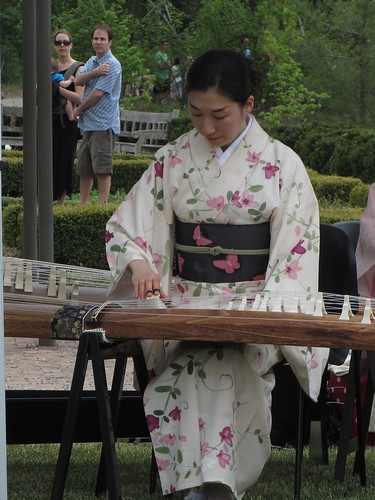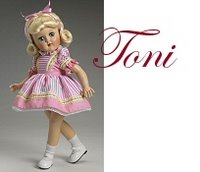 |
| Agriculture-sniffing dog |
One rarely-disputed belief about smell is that humans have a less-developed or weaker ability to detect odors than many animals, especially dogs. Both Freud and Darwin suspected that evolution had weakened the human sense of smell while being quite kind to dogs. Recent research has changed the way science views the difference. Dogs don't necessarily smell better, they just smell differently.
 |
| Drug-sniffing dog |
Let's begin with the term "trained bloodhound," which of course refers to a dog breed that can smell with incredible, almost uncanny accuracy. Give them a tiny whiff of a person's scent and -- noses to the ground -- these dogs can find their quarry. At least since the Middle Ages, bloodhounds have been trained and used to track down criminals or victims. And dogs seem to have helped human hunters to track prey animals for around 16,000 years, or at least lived with humans that long, making them the first domestic animals.
 |
Boston Police dogs in hunt for fleeing
Marathon Bomber |
The terror of being hunted down by baying sniffer-dogs plays a role in a variety of melodramas depicting an innocent accused person, a runaway slave seeking freedom in a hostile wilderness or a dangerous criminal attempting to escape in urban confusion. In stories, comic books, and movies (once they were invented) the bloodhound chase has become a cliche along with a near-mystic belief in dogs' ability to sense the quarry.
More recently, many breeds of dogs work in the customs halls of America's international airports, as you may have seen while returning from a trip abroad. Drug-sniffing dogs wear badges that say "US Customs and Border Protection" and Agriculture Department sniffing dogs wear little green coats that say "Protecting American Agriculture" while working with their handlers. Bomb squads have trained explosive-sniffing dogs. A few weeks ago, the Supreme Court ruled that "using a drug-sniffing police dog on a suspect’s property without a warrant violates the Fourth Amendment’s protection against unreasonable searches." (
NY Times, March 29, 2013)
Major news coverage has also described success training dogs to recognize the odors of various diseases such as bladder cancer smells in patients' urine and other diseases on patients' breath. However, the success rate isn't good enough to create squads of disease-sniffing dogs like the law-enforcement dogs.
Could humans accomplish anything like dogs? Of course no humans would be able to make their way through the woods on their bellies, sniffing a trail of scent. Not even if their noses would pick up the traces that the dogs would find. And although in the Middle Ages, doctors sniffed their patients' urine as a diagnostic test, I suspect that most medical professionals today would rather forget that smell has diagnostic value. Leave those things to the dogs!
But is the human olfactory sense really deficient compared to dogs? The book
What the Nose Knows by Avery Gilbert suggests that the common awe for what dogs can smell is unfair to humans, who aren't tested or trained to do similar acts of sniffing. "If the human nose received the same gee-whiz treatment given to animal stories, we would sound as impressive as any dog. Here's an example: Just by smelling some ice cream that once had a wooden popsicle stick in it, regular folks can tell whether the stick came from Wisconsin, Maine, British Columbia, or China. Amazing, no?"
Gilbert describes the popsicle-stick experiment and several others in which humans demonstrated feats of smell prowess that compare to those that give dogs their reputation. A human can pick out a T-shirt that belongs to his or her spouse or partner from among a number of shirts. A human mother knows her own babies smell from that of other babies. In his autobiography, physicist Richard Feynman described several smelling feats he had mastered, including following a scent trail on the ground or identifying people by the smell of their hands. (Gilbert calls some of these "stupid human tricks.") And in an experiment at Berkeley, human subjects on hands and knees could "follow a 10-meter-long chocolate-scented trail using only their noses." Training improved their performance -- after a few days of practice, their speed doubled and they stayed on the trail better.
"Dog lovers ... may also be surprised to learn that drug dogs and humans have almost identical sensitivity to methyl benzoate, the smell used to track cocaine. Dogs have great noses, but it's time to stop the trash talk and give ourselves more credit," writes Gilbert. (quotes from
What the Nose Knows, pp. 62-64; Kindle locations 1018-1034)
On the more technical side, in the book
Neurogastronomy: How the Brain Creates Flavor and Why It Matters, author Gordon Shepherd describes the comparative anatomy and neurobiology of the human and canine sensory organs.
Shepherd describes the length, placement, and form of the nasal tract; how the nasal tract attaches to the mouth; the form of the nostrils, the configuration of the location of the molecular sensors that connect by neurons to the brain, the olfactory bulb that processes the responses, the cognitive apparatus for sensing, recognizing, and remembering odors, and the overall measurable results. Both dogs and humans have the olfactory bulb at the base of the brain just above the smell receptors in the upper chamber of the nose, as do other mammals.
Dog nostrils have several specialized structures for scooping up air and effectively delivering smells to the smell sensors in the upper part of the snout (sniffing through the nose is called orthonasal smelling). The dog's snout and nostrils very effectively pull in smells from the ground or the air surrounding their snouts. Human noses aren't as good at sniffing, but humans make better use of retronasal smelling: that is, pressing scent-laden air across chewed food in the mouth and wafting it onto the sensors in the upper nasal passages. Such retronasal smelling combines odor sense with all the senses in the mouth (taste buds, pressure and temperature sensors, etc.) In retronasal smelling, the senses of smell and taste integrate in the brain to make flavor. Dogs' noses, says Shepherd, are "engineered for orthonasal smell, and the human nose is engineered mainly for retronasal smell." (p. 19)
In the past, generalizations about human versus dog ability to smell have not considered these structural differences. For example, simple counting of the number of olfactory sensors oversimplifies the comparison of smell ability. Indeed, humans are outranked by rodents with 1000 types of smell receptors and dogs with 800 -- humans have only 350. "However, the greater complexity of the human brain in analyzing the images becomes a critical factor," says Shepherd. He elaborates this complexity a great deal in the remainder of the book. (p. 89)
Detection of molecules is only the beginning of a process. Humans perceive flavors and create "smell images" by using the complete set of structures in the mouth, nose, and brain. The human sense of flavor thus discriminates between many foods -- the aromas of boiled or fried foods, fermented foods, and spiced foods. The brain also has intricate ways of creating smell memories, as well as selective ways of reacting to flavors, depending on the context in which one smells, including how hungry one is and on the appearance, especially the color of a smelled object. (p. 97, 137)
The role of evolution in creating the human or canine senses is mainly speculative, according to Shepherd. Details of the adaptation and evolution of the structures of the human and canine snouts and brains are not well understood, nor about the relationship of humans and dogs.
Other writers do speculate about how dogs and humans got together. One theory is quoted by Richard Wrangham in the book
Catching Fire: How Cooking Made Us Human -- wolves began to hang around human settlements because of the great garbage they could find nearby. The calmer members of the wolf packs were able to get closer to human camps; over time these calmer members of the species self-domesticated into dogs and were accepted as part of human society. (p. 184) Another theory says that once wolves did become part of the human family, dogs and humans evolved together to improve their ability to track prey and score lots of meat for both species. The dogs' role included helping to frighten away predators or human enemies, as well as participating in the hunt and eating the garbage.
The idea that dogs have an incomprehensibly evolved sense of smell beyond our imagining is probably just wrong. The concepts that human use of smell is part of a broader cognitive grasp of flavor and that it's an often unnoticed human way of perceiving the environment are fascinating. I have learned from my recent reading that human olfactory activity is far more complex than I thought. We can do away with the simple-minded idea that if we aren't able to replicate the action of a trained bloodhound we aren't very good at smelling.
So next time you hear that people don't smell well, you could mention this: dog owners in a carefully controlled test could smell which of two blankets belonged to their dog and which belonged to an unfamiliar dog 89% of the time. (Gilbert p. 61) On the other hand, if you hear that people don't smell good, you're on your own.



















